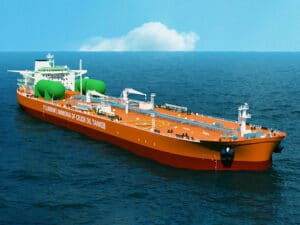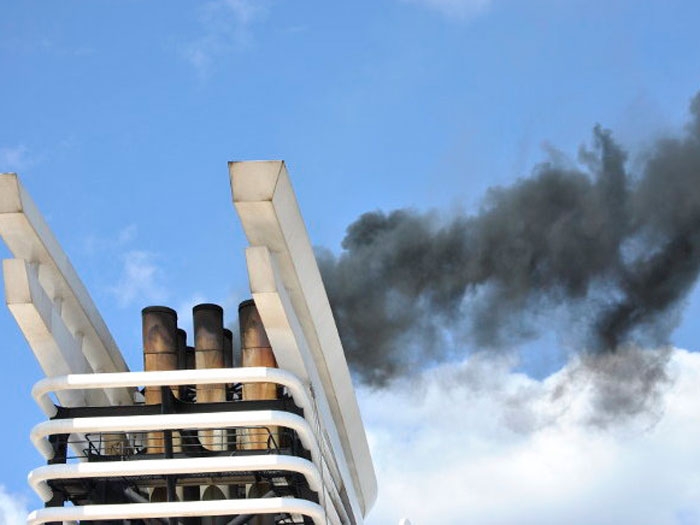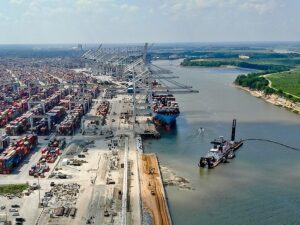
Study: SECA a success story for Europe
Written by Nick Blenkey
APRIL 20, 2016 — One year after the introduction of stricter sulfur limits for marine fuel, the air pollution in the North Sea and Baltic Sea has declined considerably says a study released by German NGO NABU (German Nature and Biodiversity Conservation Union).
Scientists from Netherlands research institute CE Delft have evaluated data from all over Europe on behalf of NABU. The resulting study shows the impacts of the stricter requirements on fuel quality in Sulfur Emission Control Areas (SECA) on the environment and the maritime industry. The maximum allowed sulfur content of marine fuels in the Baltic Sea, the North Sea and the English Channel was lowered from 1.0 percent to 0.1 percent from January 1, 2015.
The shipping industry had warned that stricter requirements for marine diesel would increase costs and thus shift traffic to road. According to the study that didn’t happen.
“The study results demonstrate the very positive overall socio-economic balance of the SECA,” says NABU CEO Leif Miller. “By using better fuels, sulfur dioxide concentrations have been lowered by 50 percent or more. Correspondingly the costs for health impacts and environmental damage lead to lower costs paid by society. The SECA is a European success story, which sends a clear signal, to globally reinforce the standards.”
“The air quality could be even better, because the major deficit of the current SECA is missing control,” says NABU transportation expert Dietmar Oeliger. He says that currently checks are carried out near ports, which suggests there could be a high number of unreported cases of violations on thr open sea.
“The economic incentive to violate by burning cheaper heavy oil is simply too great while the risk of getting caught is close to zero,” he says.
In addition, the fines in many countries are a few hundred to some thousands of Euros, which likely has no deterrent effect.
Many in the shipping industry are calling for tighter controls, so that shipowners are not put at a competitive disadvantages by fraudulent activities by some competitors.
“Permanently installed measuring instruments on board of each ship, random checks on open sea and in coastal waters as well as significantly higher penalties are necessary, to ensure compliance with existing laws,” says Mr. Oeliger.
NABU says that it can already state the economic benefits the planned reduction in the global sulfur limit of marine fuel from the current maximum of 3.5 percent to 0.5 percent in 2020 will “clearly exceed” any additional costs due to higher quality fuels.
Conclusions of the study include:
The air quality in coastal areas improved significantly after limit values for the maximum sulfur content of marine fuels had been tightened in 2015 from 1% to 0.1%. Several countries found sulfur dioxide concentrations to be decreased by 50% or more.
The tightened sulfur limit values in the North and Baltic Sea reduced socio-economic costs siginificantly. In particular the costs for health and environmental damages were found to be lower than in previous years. Other external costs, e.g. for damage to buildings or crop losses, were not quantified but are likely to have also decreased because of the lower sulfur loads.
Socio economic costs are lowered by between EUR 4.4 to 8.0 billion per year. When comparing this benefit to additional costs of EUR 2.3 billion annually due to higher bunker prices the cost-benefit-ratio is between 1.9 and 3.5.
There have been no issues regarding the availability of marine fuels with a maximum sufur content of 0.1%. Moreover, no significant increase for bunker prices were found particularly as low oil prices were at low levels.
RO/RO ferries and short sea shipping,which were assumed to be the most affected businesses as they operate almost exclusively in the SECA zone, have not faced negative impacts due to the tightened sulphur standards according to statements from the industry itself. Some shipping companies even reported a financial record year for the year 2015 and established new services. Consequently, there have been no reports of significant major shifts to road transport along SECA areas.
In terms of control and enforcement, EMSA data show that 3 – 9% of the checked ships did not meet legal requirements. Experts believe that the rate of non-compliance on open seas might be significantly higher, but the limited available data do not allow conclusions to be drawn on this. More and better data are needed in order to estimate the actual compliance rate on the open seas.Additional monitoring and control techniques need to be developed in order to reduce the current inaccuracies and increase the intelligence of the monitoring system. This should result in better control of behavior on the open seas.
The number of fuel sample analyses needs to increase significantly in order to meet the control quota required by the European legislation. Authorities should take responsibility in order to meet the targets, train staff and use state of the art equipment.
Sanctions are applied in only 30% of all non-compliance cases. Sanctions should be proportionate to the economic benefits of not complying with the regulations. Furthermore, information on non-compliance should be send to the next port of destination in order to allow better control.
Download the complete report “SECA Assesment: Impacts of 2015 SECA marine fuel sulfur limits” by CE Delft HERE





Leave a Reply
You must be logged in to post a comment.